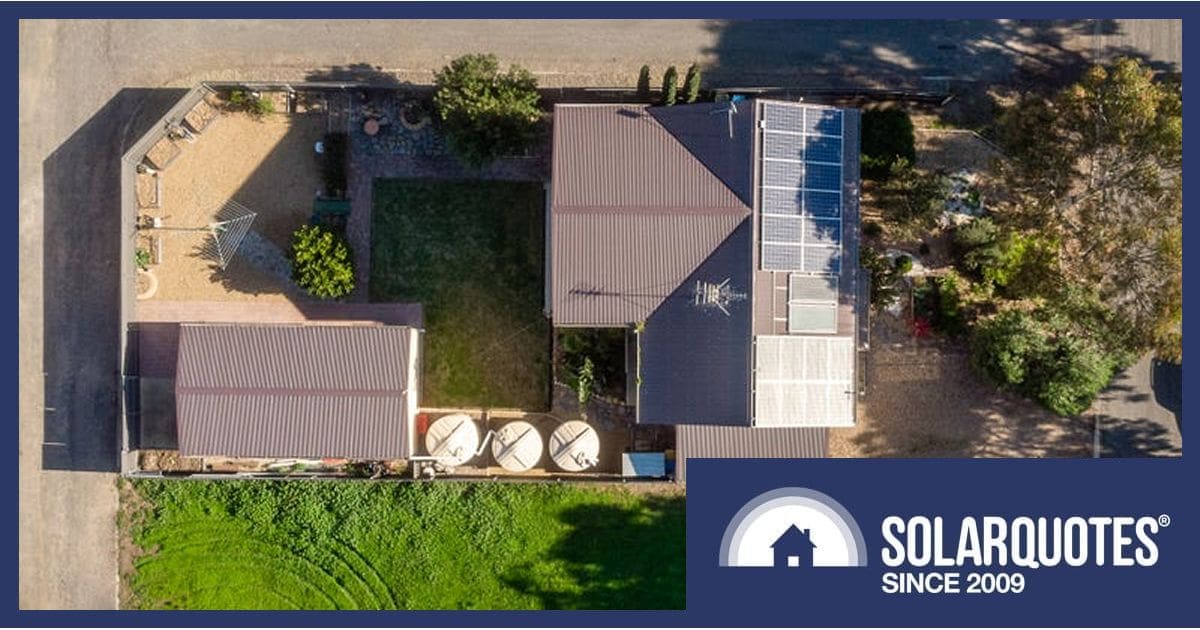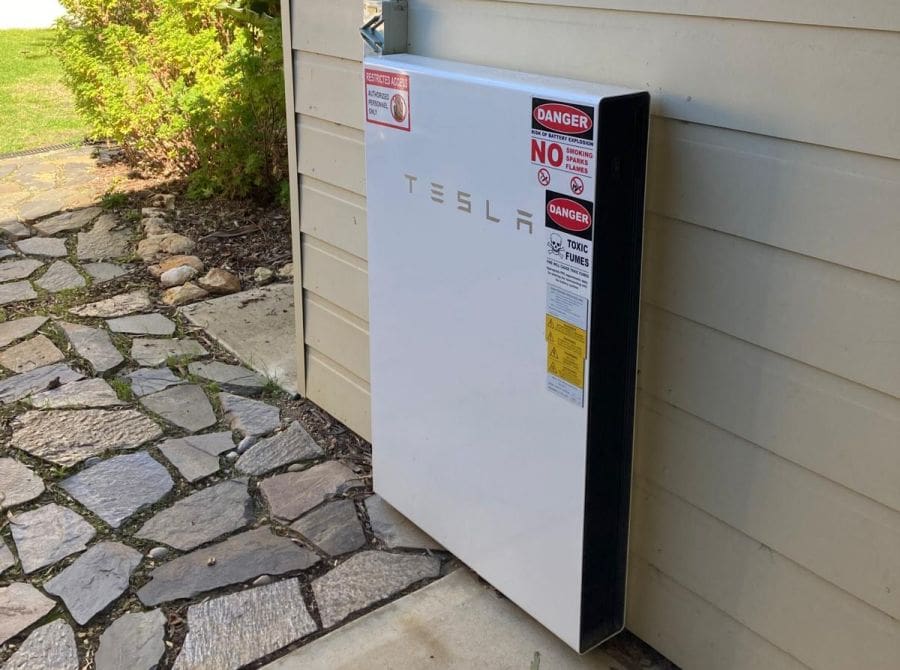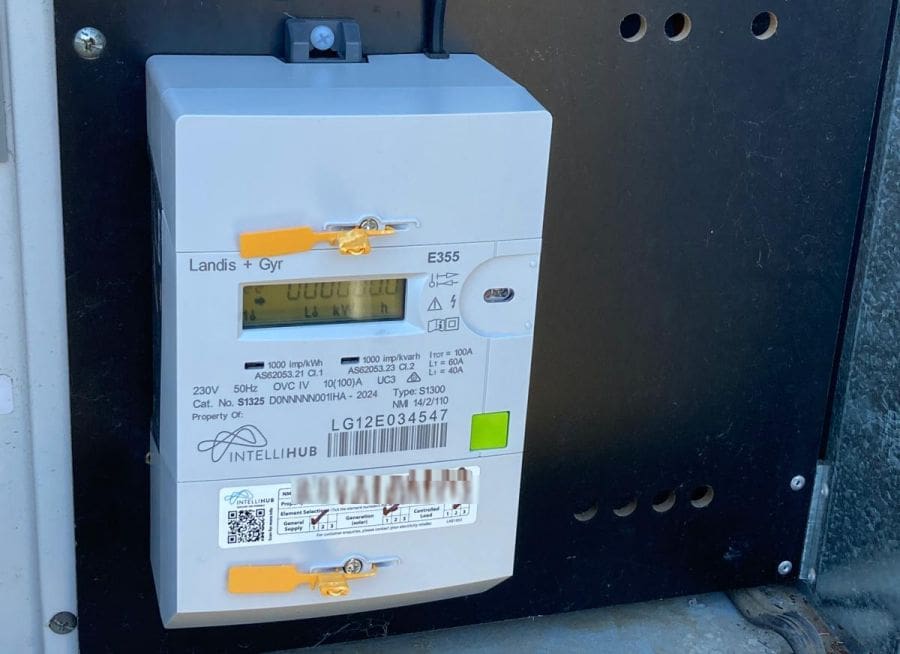
This homeowner in SA has made good use of Time-of-Use (ToU) electricity tariffs and a home battery to minimise the financial impact from significant shading of his solar power system during winter.
There has been grumbling about Time-of-Use electricity tariffs; mainly around some electricity retailers behaving badly after a smart meter is installed1. But Alistair Campbell is a ToU fan.
A couple of years ago, Alistair purchased a house in South Australia that had existing solar panels and then installed a Tesla Powerwall battery.

All was going well, but then came winter and the system was not generating and storing enough energy to cover household consumption. He noticed the culprit – a large blue gum about 10 metres north of the house (pictured above).
Alistair considered installing more solar panels on the east and west roof faces, but suffered sticker shock when he found out how much he would need to spend. Alistair then approached Council about cutting the tree back a bit. Permission was denied.
But the original house plans noted the tree was marked for removal before building. At that point the tree was only 100mm in diameter, but was now 700mm and had pretty much grown over the boundary onto his property. He approached Council again with the new information, and was given permission to prune – at his own expense. An arborist was then contacted for a quote, who said pruning would damage the tree, but it could be trimmed a bit.
The quote for trimming was over a thousand dollars; and there would still be some shading.
“Solar Sponge” ToU Rates And Smart Meter Save The Day
“Meanwhile I’d been following all the hoo-ha about Time-of-Use tariffs (ToU) – thanks again SolarQuotes – some very helpful info, videos, blog-posts, etc.,” Alistair told us. “Well, I thought, I’ve got a battery, so maybe in winter I could fill it with cheap power during the day when the power companies have more solar than they can poke a stick at, and then use that cheap power for the house in the evening and at night?”
While it varies between retailers, ToU tariff rates can be up to a third of the cost per kilowatt-hour during the shoulder period (usually 10 am to 2-3 pm) compared to peak periods. These cheap shoulder rates are sometimes referred to as a “solar sponge” tariff.
After some back and forth with various parties, Alistair’s electricity retailer informed him that to switch to a time-of-use plan, his existing meter would need to be replaced with a smart meter – but it wouldn’t cost him a cent.
With that installed, he input the ToU tariff rates into his Powerwall app, and it takes care of everything. He also now has a controlled load tariff for his hot water system that only comes on when electricity is at its cheapest.
“Moral of the story? I got rid of my shading problem,” says Alistair. “But, not by chopping at the tree ($1000+), and not by putting on more solar ($5000+), but by getting a smart-meter and switching to (much-maligned) ToU tariffs ($0!). I’m happy – reduced winter power costs, and I don’t have to ruin a lovely tree”.
Are you on the best electricity plan for your circumstances? You can compare electricity plans and feed-in tariffs here. Thinking about energy storage? Discover everything you need to know about solar batteries.
Footnotes
- On a related note, the Australian Energy Market Commission recently announced a broad consumer-focused review of electricity pricing, which will consider how to deliver more benefits and improved protections for all consumers. ↩


 RSS - Posts
RSS - Posts



There are definitely opportunities for arbitrage.
If you can buy at one time of day (midday) and sell for more at another time (6pm) and the profit more than pays for the batteries then those with deep pockets can do very nicely.
That is, after all, what the much vaunted big batteries do at a grid level.
…tell this man (if he’s in Adelaide?) if I can have a look at the google street view, I can probably prune it for him, in exchange for a slab of beer & some free fire-wood …a few days ago, we carefully took down a redundant chimney that was shading our afternoon sun …was super duper to instantly see an increase in the afternoon yield of our array …we don’t have a battery to rig the ToU in our favour, so it made our decision pretty simple :))
What I worked out I could do, especially in winter in Melbourne, is sign up for an energy plan (Ovo) that gives 3 hours of free electricity 11am-2pm (I have referral code if anyone wants it). I set my Sungrow system to force charge my battery in that time. I also disallow using the battery in that time. After 2pm we use the battery if no sun, but we don’t pay the peak rates ever.
So we force charge the battery for use overnight and run the house (heat pump hot water and reverse cycle ducted heater) pretty much for free all year round!
Hi John,
Just read your article about Ovo energy, we are installing new solar panels with a solar edge battery and would be interested in the referral code if you don’t mind.
Thanks
Hi Michael, sure thing. Click this or copy and paste the link.
http://www.ovoenergy.com.au/refer/john10579
How did Alistair get his Powerwall to charge when not enough solar to charge it please
The Tesla App operates in one of 2 modes: ‘Self Consumption’ (only charge from solar) or ‘Time Based Charging’ where the software is free to charge from the grid when it makes sense. You simply tell the app the details of your Time Of Use tariff, and it takes care of the rest.